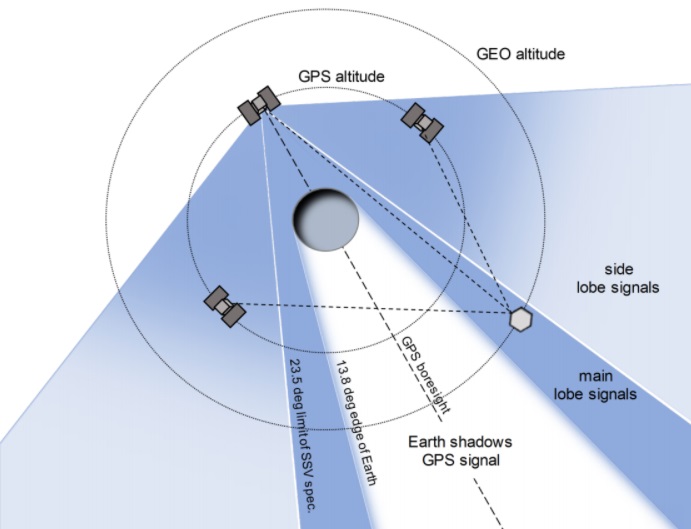The Institute of Navigation recognized a team of NASA engineers with the Samuel M. Burka award. The award recognized a publication related to NASA’s GPS Antenna Characterization Experiment (GPS ACE).
The GPS ACE effort used GPS signal data received by spacecraft in geosynchronous orbit to map GPS signal patterns. The comprehensive models developed by the team furthered the navigation community’s understanding of GPS side lobes, which supplement main lobe signals to provide spacecraft at higher altitudes with critical navigation data. In fact, NASA spacecraft have fixed their location almost halfway to the Moon using GPS and a forthcoming Commercial Lunar Payload Services receiver is expected to obtain the first GPS fix on the lunar surface.
Jennifer E. Donaldson, Joel J.K. Parker, Michael C. Moreau, Dolan E. Highsmith and Philip D. Martzen authored a 2020 paper, “Characterization of on‐orbit GPS transmit antenna patterns for space users,” published in the Institute’s Navigation journal.
[Image above: The geometry for reception of GPS signals in high Earth orbits. Courtesy NASA/Donaldson.]
From the paper’s abstract:
The GPS Antenna Characterization Experiment (GPS ACE) has made extensive observations of GPS L1 signals received at geosynchronous (GEO) altitude, with the objective of developing comprehensive models of the signal levels and signal performance in the GPS transmit antenna side lobes. The GPS ACE architecture has been in place collecting observations with extreme sensitivity for several years, enabling the accumulation of full azimuthal coverage of the GPS transmit gain patterns over time. Results discussed in this paper include the reconstructed transmit gain patterns, with comparison with available preflight gain measurements from the GPS vehicle contractors. For GPS blocks with extensive ground measurements, the GPS ACE results show remarkable agreement. For blocks without extensive ground measurements, the GPS ACE results provide the only existing assessments of the full transmit gain patterns. The paper also includes results of pseudorange deviation analysis to assess systematic errors associated with GPS side-lobe signals.






